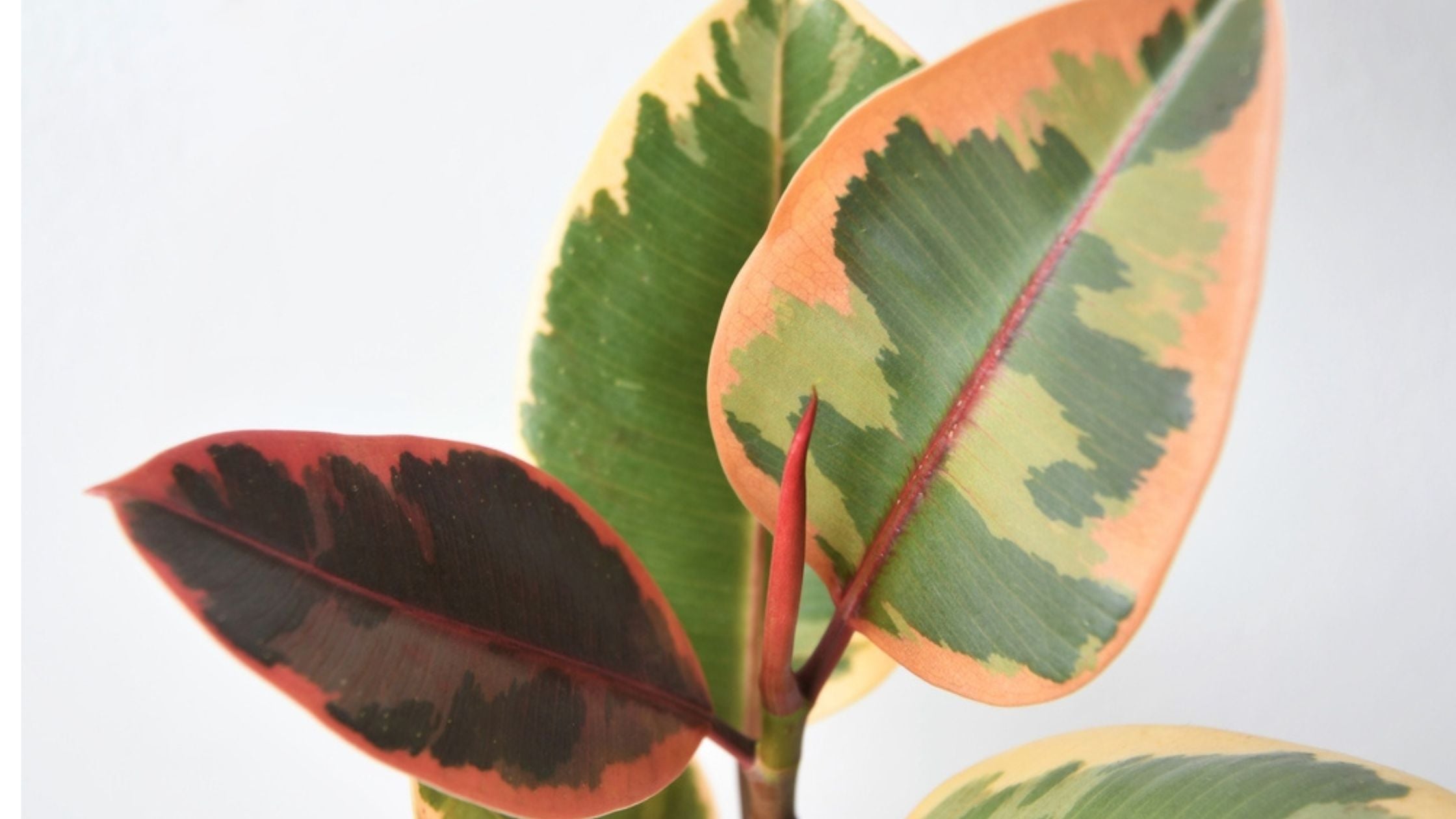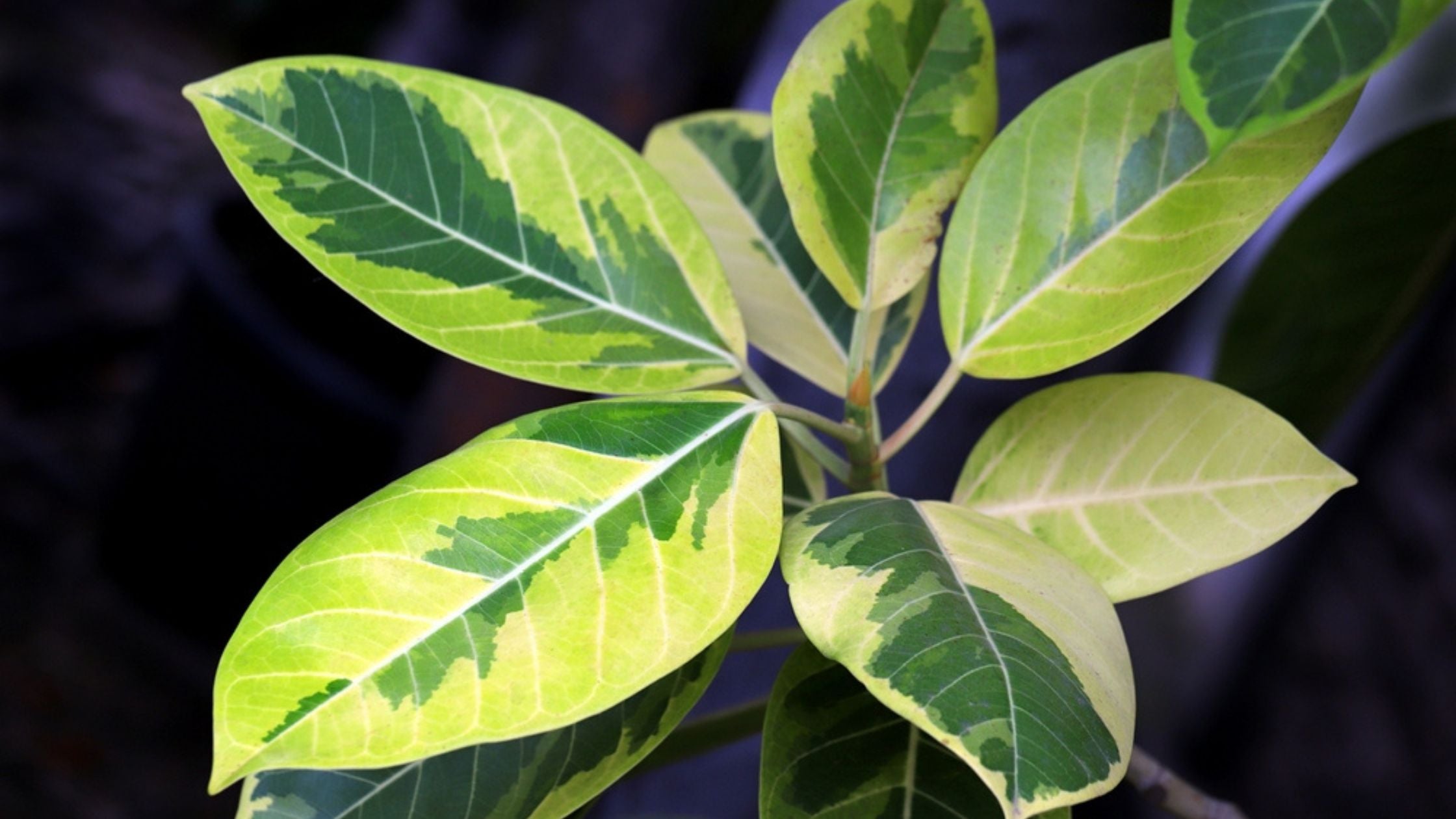
Ficus Elastica Ruby Care
The Ficus elastica ruby is an attractive, rose-tinted variety of the Ficus elastica. Like the more common Ficus elastica, the ruby Ficus elastica has glossy, ovate leaves and a vertical growth habit. The only difference is that their leaves display in red, dark pink, and cream. The vividness of the red varies between plants.
The ruby Ficus looks so impressive that you might suspect it requires advanced gardening skills, but this is far from the case. Read on for how to keep your ruby Ficus happy.
Temperature, Position, and Lighting
The best way to keep your ruby Ficus looking its finest is by getting the lighting conditions right. While the ordinary Ficus elastica appreciates shaded spaces, you must give your ruby Elastica much more sun.
Your Ficus elastica ruby will be happiest in an area flooded with bright but indirect light. Direct light will scorch the leaves, but the red markings will fade without enough light. Not only will you end up with a much less dramatic-looking plant, but it will also start to drop its leaves. A south-facing window will work if you have net curtains to moderate the light. West and east-facing windows are best.
The temperature range of most indoor spaces will suit the ruby Ficus. It needs anywhere between 60 to 80 degrees Fahrenheit. Never let temperatures drop below 60.
Like all tropical plants with large glossy leaves, the ruby Ficus will attract dust. Wipe your plant clean regularly with our Plant Wipes made from biodegradeable plant fibers.
Watering
Keep the soil consistently slightly moist (not waterlogged), and never let it dry out completely. A suitable soil mix will help maintain the correct moisture level – read more about this below.
When you water, run the soil under a tap for 30 seconds. Then, place the pot on a dry surface for half an hour to drain any excess moisture.
Humidity
This plant prefers relatively high humidity. Here are tips for keeping the air around your plant moist.
- Place a group of plants on a tray of pebbles with water halfway up the depth of the pebbles. Ensure the bottom of the pot doesn't touch the water, as this will make the soil too soggy. The idea behind the pebble tray is that the pebbles give a larger surface area for water to evaporate off of. Grouping plants also increases humidity in their immediate surroundings.
- Mist with a bottle spray several times a day. If you have a busy schedule and are likely to forget, opt for the pebble tray.
- Get a humidifier. This is one of the most effective ways to raise air humidity, especially if you have many indoor humid-loving plants.
Fertilizer
During the spring and summer, fertilize your ruby Ficus every six weeks with a balanced liquid fertilizer. A balanced fertilizer contains phosphorus, potassium, and nitrogen in an equal proportion. Don't add too much; your soil should give your plant some essential nutrients. It can be a good idea to dilute the fertilizer more than the manufacturer's instructions tell you to, as over-feeding your plant can be more harmful than under-feeding. Don't fertilize during winter.
Potting Mix
The Ficus elastica's natural habitat is rainforest undergrowth. Here, the soil is made up of decayed organisms and is rich in nutrients. Recreate this habitat for your plant by providing soil heavy in organic matter. But it would help if you also ensured the soil didn't get too heavy and retain excess moisture. Keep your soil well-draining by adding looser, coarser material to keep the soil mixture full of air pockets.
The best soil mix for your ruby Ficus elastica is one part coco chips or pine bark, one part perlite, and one part houseplant potting soil.
When repotting your Ficus elastica, we recommend Southside Plants Trail Mix, a chunky potting mix perfect for tropical plants with ropey roots.
Repotting
How often you give your ruby Ficus a bigger pot depends on how fast it grows. You can estimate whether it needs a bigger pot by eye – if the plant is getting much wider than the pot, it may be time for an upgrade.
The Ficus elastica does not like to be rootbound, so keep an eye on this. You can check whether its roots have outgrown the pot by removing the plant and seeing if many roots wrap around the soil. You should aim to upgrade the pot before you reach this point.
Spring or summer is the best time to repot. The plant will be actively growing during this time, meaning it can easily repair any tissue damage during the pot transfer.
Pruning
The Ficus has a vertical growth habit, meaning it tends to be taller than it is wide. Once your plant reaches the desired height, you can prevent more vertical growth by pruning the top of the plant. Prune off any branches that might be emerging from the main trunk.
If you want a bushy, wider plant, you should encourage branches emerging from the main trunk to branch into further smaller branches. Prune any branches emerging from the main trunk just above one of its growth nodes to simulate more branching. Eventually, you will achieve a broader, more voluminous plant.



Leave a comment
This site is protected by hCaptcha and the hCaptcha Privacy Policy and Terms of Service apply.